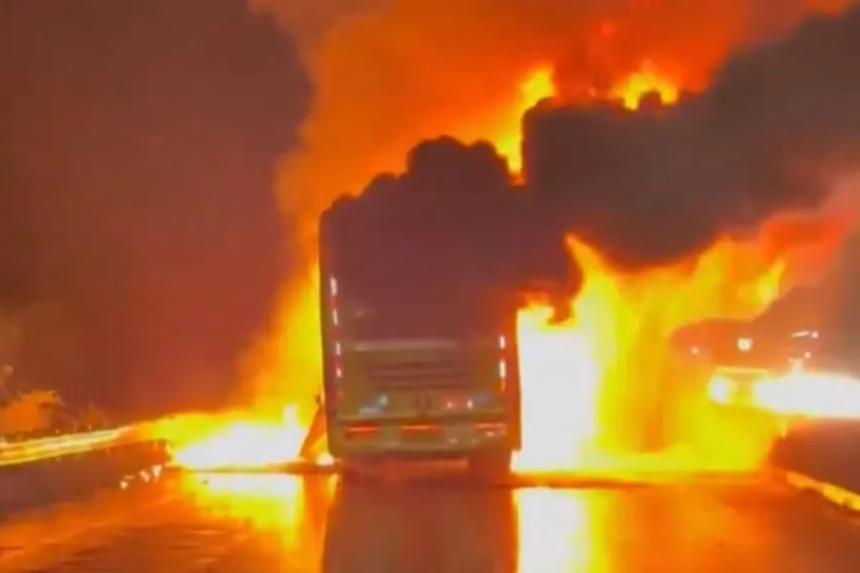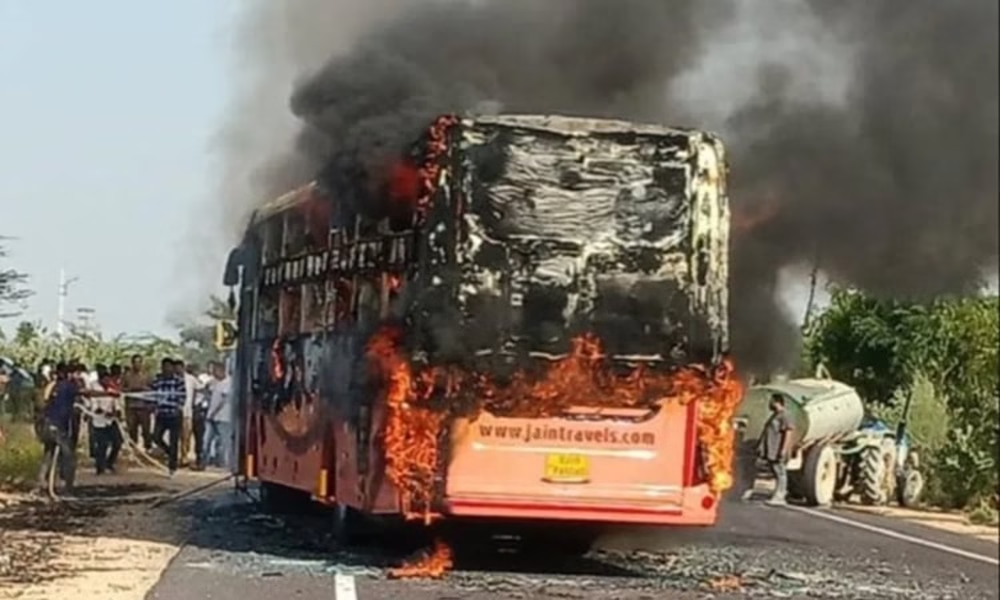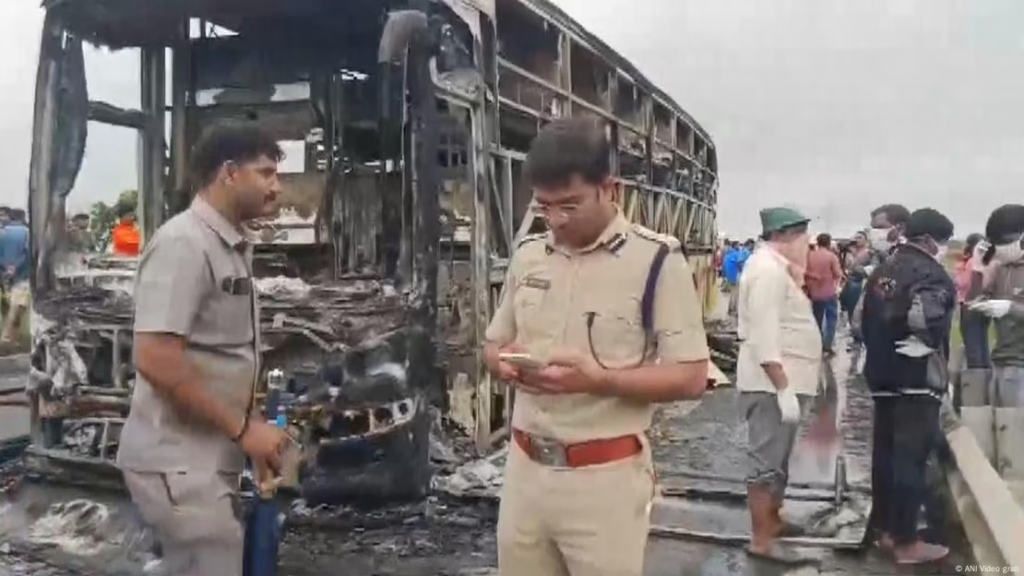KURNOOL, India — A pre-dawn blaze on a highway near Kurnool in Andhra Pradesh has killed at least 20 people and left several others injured after a private sleeper coach caught fire.
The incident occurred at around 3 am on Friday and has raised urgent questions about bus safety, with early findings pointing to a jammed main door that blocked escape for many sleeping passengers.
The overnight coach, run by a private operator on the Hyderabad to Bengaluru route, erupted in flames after a serious crash. Investigators said the bus struck a motorcycle, which became lodged beneath it and was dragged along the road. The resulting friction and impact ruptured the bike’s fuel tank, triggering a fire that quickly spread through the bus.
More than 40 people were on board. Eighteen passengers survived, not through working emergency exits, but through their own actions in a moment of chaos. With the main door stuck shut, survivors broke side windows and jumped onto the road in the dark. Many suffered burns, cuts, and fractures while escaping.
Accounts from the scene describe smoke filling the cabin within moments. Several survivors said the primary exit would not open, which turned a desperate situation into a fight for life.
Many Passengers Were Asleep
Most of those who died were asleep when the crash happened and the fire took hold. Soft furnishings and other combustible fittings fed the flames, leaving little time to react. Thick smoke, heat, narrow walkways, and the darkness inside the coach made movement difficult, especially for passengers waking in panic.
While the collision and fuel ignition sparked the disaster, investigators are concentrating on the jammed door that appears to have trapped many victims. Kurnool District Collector Dr A. Siri said the failure of the main exit in an emergency created a deadly bottleneck. Many bodies were found near the front and middle sections, pointing to an attempt to reach the blocked door.
Police have filed a case against the two bus drivers for alleged negligence and speeding. Both drivers survived. Forensic teams are conducting DNA tests to identify the victims due to the severity of the fire.
This is the second major bus fire in India this month, prompting calls for a nationwide review of private coach safety. Specialists are highlighting non-functional emergency exits, flammable interiors, and missing or faulty safety systems as repeated failings.
Andhra Pradesh Chief Minister N. Chandrababu Naidu has expressed condolences and ordered a full inquiry. He has directed immediate technical inspections of private coaches across the state. The government has announced ex gratia support for families of the dead and injured.
The incident is a stark warning about road safety in India, where a routine crash can turn deadly when basic safety measures fail. The recent string of sleeper coach fires in India has exposed serious safety gaps.
Below is a summary of the main factors behind the high death tolls and the issues flagged by investigators in India:
Why are Casualties so High
- Jammed or blocked exits: Main doors and emergency exits often fail or are hard to reach after a crash, trapping passengers who have just woken up.
- Flammable interiors: Many sleeper coaches use foam, rexine, and heavy curtains. These materials ignite fast and allow flames to race through the cabin within minutes.
- Poor escape paths: Narrow aisles, bunks, and railings slow movement and make it hard to reach the few exits in smoke and darkness.
- Night-time crashes: Most fatal fires happen between midnight and 6 am, when passengers are asleep and visibility is low.
Regulatory and structural breaches
- Non-standard body building: Operators often buy chassis and engines from OEMs, then get the coach body built by informal workshops that ignore required safety codes.
- AIS rules ignored: Private fleets frequently flout Automotive Industry Standards such as AIS-052 (Bus Body Code) and AIS-119 (Sleeper Coach Requirements).
- Emergency exits: Rules call for at least four emergency exits, including two collapsible windows or roof hatches, kept clear at all times. Many buses, especially older or illegally altered ones, do not comply.
- Fire safety systems: AIS-153 requires Type III buses, including sleeper coaches, to have Fire Detection and Suppression Systems under AIS-135. These systems are often absent or not working.
- Illegal alterations: Some operators convert seater buses into sleeper coaches or add extra fuel tanks without approval, increasing risk.
- Registration loopholes: Buses are sometimes registered in states with lower taxes or weaker enforcement, for example, Arunachal Pradesh or Nagaland, and then run elsewhere. This practice hampers oversight of safety and maintenance.
















